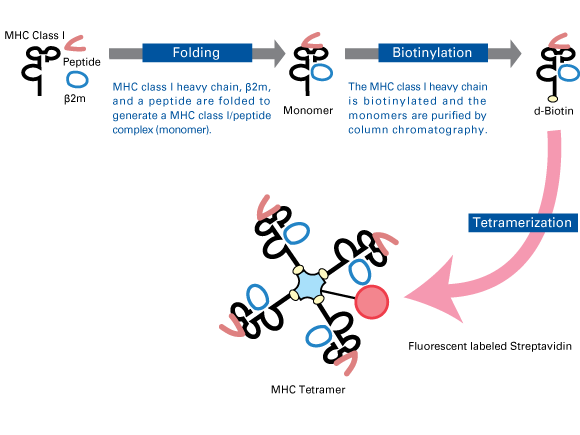
Human tetramers - Class I
T cell receptors (TCRs) expressed on the surface of T cells specifically recognize and bind to complexes of major histocompatibility complex (MHC) molecules and peptide fragments. CD8+ T cells, also called cytotoxic T lymphocytes (CTLs), recognize complexes of MHC class I molecules and peptide. CTLs directly kill target cells including virus-infected and cancer cells.
Preparation of MHC Class I Tetramer Reagents
MHC class I tetramer reagents are generated primarily using the method developed by Altman et al., who demonstrated that tetramers of MHC class I/peptide complexes could be used as probes for detection and quantitation of antigen-specific CTL (Science 1996, 274: 94-96)
E. coli-expressed recombinant MHC class I heavy chain and β2-microglobulin (β2m) are folded in the presence of a peptide antigen to generate a soluble monomeric MHC class I/peptide complex (monomer). The monomer is then biotinylated by the biotin ligase enzyme, BirA, at a lysine residue present in the biotinylation sequence that has been added to the C-terminus of MHC class I heavy chain. The biotinylated monomer is purified by column chromatography. Purified biotinylated monomers are tetramerized by mixing with a fluorescently-labeled streptavidin to make MHC tetramer reagents.




